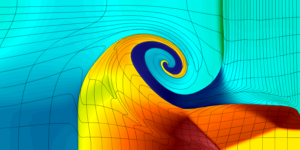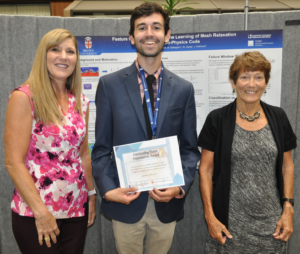 From June 2018 to August 2018 I interned at Lawrence Livermore National Laboratory (LLNL), in the Center for Applied Scientific Computing (CASC). LLNL is a DOE funded national lab out in Livermore, CA, focused on a number of scientific initiatives spanning high energy physics, biomedical engineering, and cybersecurity. LLNL’s identity has always been paired with its supercomputing resources, but recently it has also earned fame for its giant laser, housed at the National Ignition Facility (you can read more about that here).
From June 2018 to August 2018 I interned at Lawrence Livermore National Laboratory (LLNL), in the Center for Applied Scientific Computing (CASC). LLNL is a DOE funded national lab out in Livermore, CA, focused on a number of scientific initiatives spanning high energy physics, biomedical engineering, and cybersecurity. LLNL’s identity has always been paired with its supercomputing resources, but recently it has also earned fame for its giant laser, housed at the National Ignition Facility (you can read more about that here).
My job was to explore feature reduction methods for a machine learning model that could help prevent physics simulation failures. Hydrodynamics simulations often track fluids with a Lagrangian mesh. As the fluids contort, so can the mesh, which may lead to extreme values that crash the simulation, as pictured on the left (source). The solution is to apply a relaxation algorithm that spreads out the mesh, alleviating the pressure points, but not too much to where artificial effects are generated.
 As it stands today, scientists have to manually apply these algorithms in a timely process. It would therefore be invaluable to have a model that could read in physical/geometric data on the fly and apply relaxation algorithms automatically. My research group, Project Alkemi, was exploring the use of random forest algorithms for this purpose, and desired a simple feature set to minimize the amount of data necessary to run the models alongside the simulations.
As it stands today, scientists have to manually apply these algorithms in a timely process. It would therefore be invaluable to have a model that could read in physical/geometric data on the fly and apply relaxation algorithms automatically. My research group, Project Alkemi, was exploring the use of random forest algorithms for this purpose, and desired a simple feature set to minimize the amount of data necessary to run the models alongside the simulations.
I explored several different methods of feature reduction, including forward selection, backward selection, Recursive Feature Elimination (RFE), and a novel technique involving training “mini-models” on individual features and using combinatorics to determine the least redundant, best performing subset. I was able to reduce the feature set in half without sacrificing model performance, but ultimately determined that the testing method my group was using was not sensitive to over-relaxation, and therefore was insufficient. I presented a poster at the end of the summer and won an Outstanding Presentation Award for my work, pictured on the right. Feel free to check out my winning poster in the Media tab.